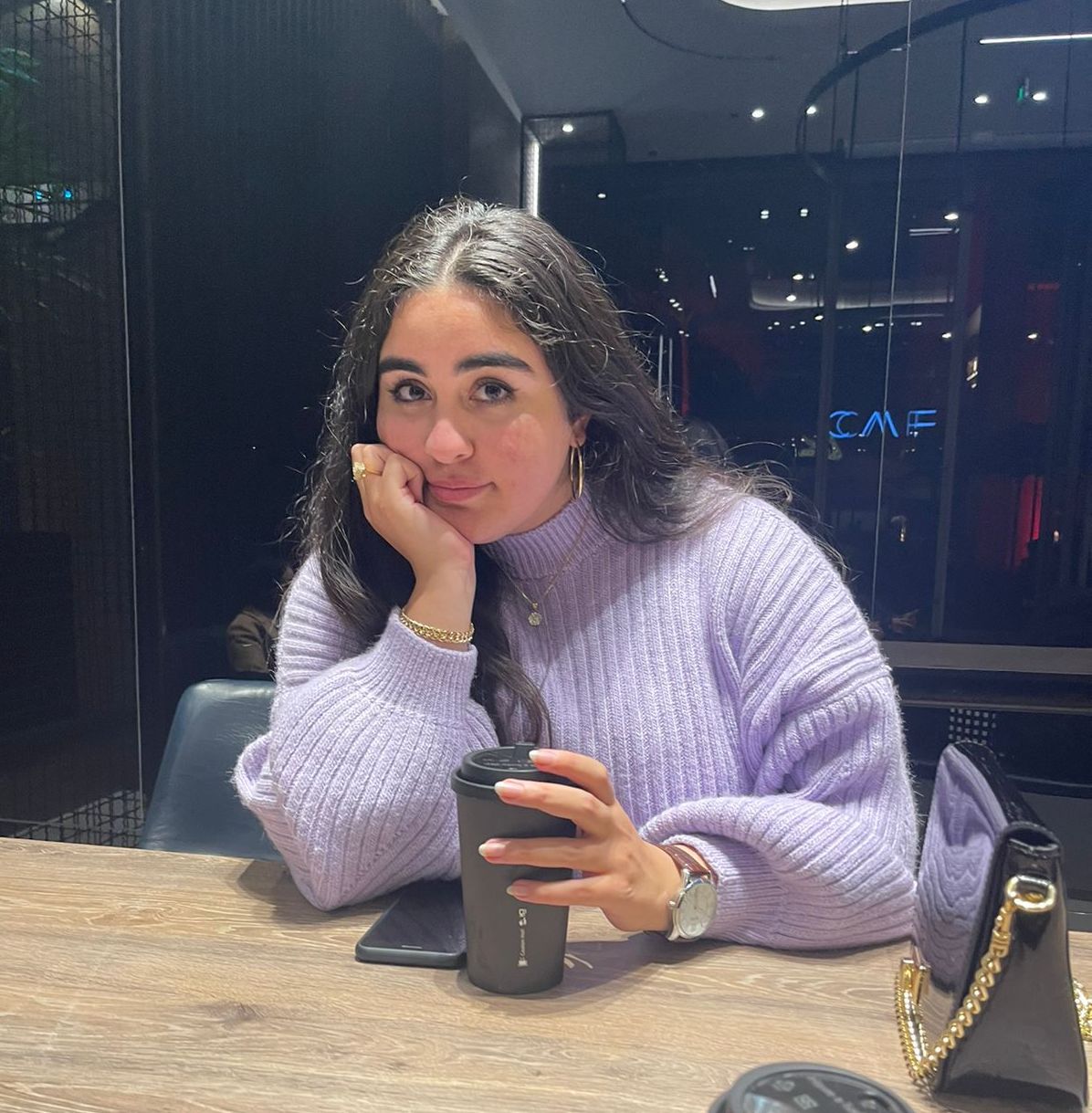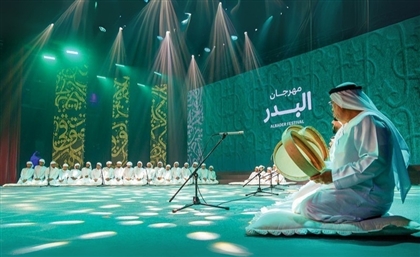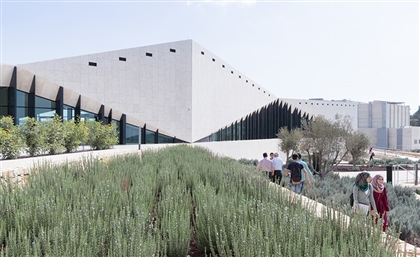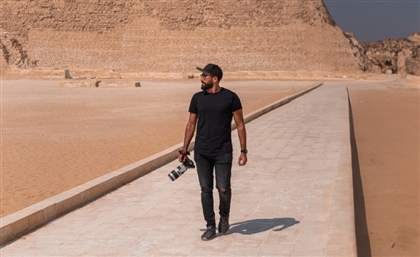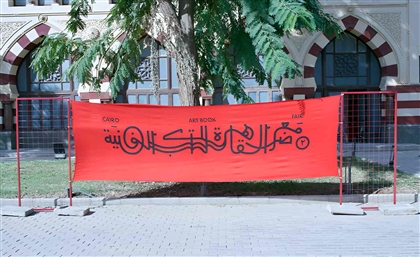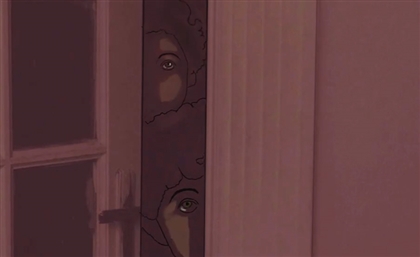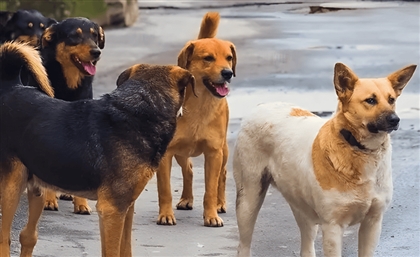Dance & Defiance: Dabke as an Emblem of Resilience in Palestine
With each rhythmic stomp, Palestinians reclaim their cultural identity, defiantly asserting their existence in the face of systemic oppression.
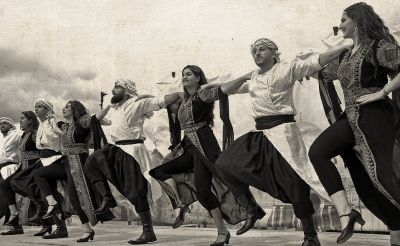
“In the face of Israeli encroachment and the erasure of Palestinian space, time, and presence, the preservation of indigenous practices such as the dabke forcefully resists dispossession. Folklore is resistance. Detached from its ‘precious soil’, Palestinian identity, history, and nation must be kept alive, carried, preserved, and performed fact,” wrote researcher and Global Development Studies professor, David A. McDonald in his book, ‘My Voice Is My Weapon Music, Nationalism and the Poetics of Palestinian Resistance.’
Embedded within the heart and soul of the Palestinian people, the dabke – an ancient folkloric dance native to the Levant – transcends mere artistic expression, serving as a resolute act of defiance against the Zionist state's occupation. With each rhythmic stomp and synchronised movement, Palestinians reclaim their cultural identity, defiantly asserting their existence and resilience in the face of systemic oppression, while igniting a flame of resistance that resonates with generations past and present, affirming their connection with the land. The word 'dabke' is derived from the Arabic term 'dabaka', which denotes ‘stamping of the feet’.
The word 'dabke' is derived from the Arabic term 'dabaka', which denotes ‘stamping of the feet’.
The origins of the dabke dance, however, can be traced back to ancient Canaanite fertility rituals. In those distant days, as the seasons unfolded and the earth awakened, the dance emerged as a way to honor the land, chase away malevolent spirits, and safeguard the tender shoots of new life. It was a dance of reverence, a celebration of nature's abundance, and a prayer for bountiful harvests.
“Deepening roots to the land resonates with the Palestinian cultural notion of sumud (steadfastness–particularly in the context of holding onto or being tied to one’s land), a major theme in the ideology of Palestinian indigenousness and politics of resistance. In the realm of performance, this ideology is commonly expressed and embodied through dabke, the folk dance that through its intricate steps, hops, and stomps (establishing accentuated contact with the ground) became a marker of Palestinian nationalism, a way of expressing identity and belonging, and a prominent source for contemporary choreography in the West Bank,” writes dance educator, researcher and lecturer, Dr. Hodel Ophir in ‘Rerooted and Reimagined: Dance, Palestinian Women, and the Reclamation of Urban Spaces’.
Legend intertwines with practicality; in modern times, the stomping element of the dance emerged from a practical need—to solidify roofs made of humble mud. As villagers came together, their synchronised stomping compressed the earthen roofs, preventing cracks from forming.
Over time, as the Levant dissolved from one land into different nation-states, each developing their own dialects, dialogues and cultural variations, they also developed their own variations of the dabke.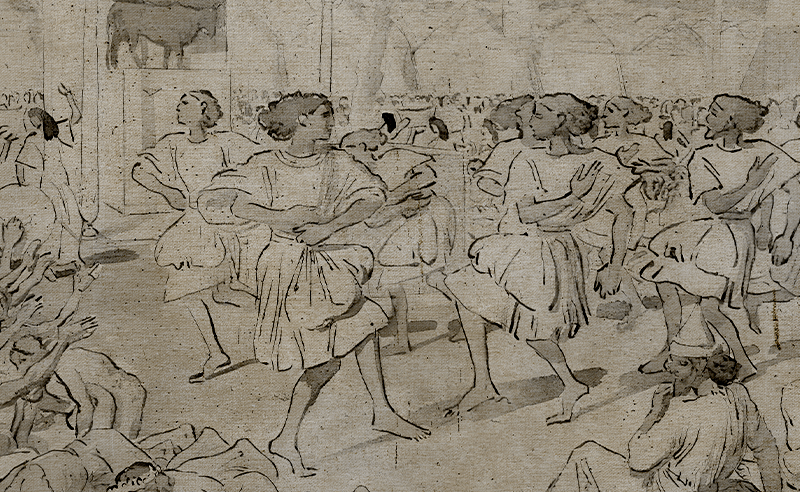 Amongst the Palestinians, Al-Shamaliyya and Al-Sha’rawiyya are most popular.
Amongst the Palestinians, Al-Shamaliyya and Al-Sha’rawiyya are most popular.
Al-Shamaliyya is led by a skilled lawweeh, a dancer of exceptional agility and improvisation, the dancers join hands in a semicircle, moving in harmony. The music begins, a solo on the mijwiz or yarghoul, accompanied by enchanting voices. With each beat, the dancers weave their steps, their bodies becoming vessels of joyous expression. Al-Sha’rawiyya, a dance reserved for men, exudes strength and power. With each stomp, the earth trembles beneath their feet, echoing the resilience of a people who have endured trials and tribulations.
Dabke’s enchanting melodies are brought to life by a rich ensemble of traditional instruments. The oud emits a deep and mellow sound, its strings resonating with the soul of the dance. The mijwiz, a reed clarinet, and its cousin, the minjjayrah, enchant with their haunting tunes. The rhythmic heartbeat of the tablah, a small hand drum, reverberates through the dancers' bodies, while the daff, adorned with metal discs, adds a shimmering touch to the symphony. The arghul, with its distinctive pipes, and the shubabeh, a woodwind instrument of ancient heritage, complete this orchestra of traditions.
Early in the 20th century, Palestinian fellahin, or farmers, would sing work songs while engaged in tasks such as fishing, shepherding, harvesting, and olive oil production. Zajaleen, travelling storytellers and musicians, captivated audiences with their epic tales. Popular songs took on various forms, the most popular of which is Dal'ona.
In their book, ‘Palestinian Arab Music: A Maqam Tradition in Practice,’ scholars Ruth Katz and Dalia Cohen wrote, “The classification of songs according to the type of dabke they belong to is very common; songs belonging to the dabke genre have poetic features, and even subgenres that are poetically defined. The poetic structure of dabke songs typically features four-line stanzas with the rhyming patterns AAAB, CCCB, and so on. The theme of almost all dabke songs is love.”
Palestinian music began serving as a poignant reflection of the Palestinian experience, resonating with themes of struggle under occupation, yearning for peace, and a profound love for the land of Palestine. ‘Zareef El-Tool’ stands as one of the most popular Palestinian songs of today, with roots that trace back several decades. This song serves as an encouragement for Palestinians not to abandon their homeland:
O, elegant and tall one, pause and let me tell you
You are heading abroad, but your country is better for you
I fear that you will settle there
And embrace others, forgetting about me
However, under the British Mandate of the 1930s and later, the Nakba in 1948, Palestinian folk music and folk dance were politicised, transforming into tools of cultural resistance, fighting against Israeli appropriation.
In ‘Dance and Political Credibility: The Appropriation of Dabkeh’, New Zealander scholar and trans-disciplinary educationalist, Nicholas Rowe – who lived in Occupied Palestine between 2000 and 2008 – explains that, “At the same time that dabkeh was helping to establish and legitimize Israeli cultural identity around the world, the recognition of the indigenous population of Palestine as a source for dabkeh began to disappear from Israeli dance discourse. Israeli dance texts in the 1950s begin to discuss the ‘rich’ and ‘vibrant’ controbutions of the newly arrived Yemeni Jews, and give only passing mention to a vague influence from the more ‘monotonous Arab’ dabkehs.” In response to the challenges posed by Israeli occupation and the threat of cultural erasure, dance troupes began to emerge both within and outside of Palestine, dedicated to preserving and promoting the tradition of dabke. These troupes became vital conduits for keeping the dance alive, nurturing a new generation of dancers and spreading awareness of Palestinian culture on a global scale. They served as guardians of the dance's rich heritage, meticulously training and passing down the intricate movements and rhythms, ensuring that the flame of dabke continued to burn brightly.
In response to the challenges posed by Israeli occupation and the threat of cultural erasure, dance troupes began to emerge both within and outside of Palestine, dedicated to preserving and promoting the tradition of dabke. These troupes became vital conduits for keeping the dance alive, nurturing a new generation of dancers and spreading awareness of Palestinian culture on a global scale. They served as guardians of the dance's rich heritage, meticulously training and passing down the intricate movements and rhythms, ensuring that the flame of dabke continued to burn brightly.
“These dance productions came to reflect an exiled and occupied society that was not trying to reconstruct an imagined past but instead to maintain a contemporary relevance for its varied cultural legacy. Central to this aim was the maintenance of local social cohesion in the face of external attempts to dissemble the population,” writes Nicholas Rowe in ‘Post-Salvagism: Choreography and Its Discontents in the Occupied Palestinian Territories’.
Through their performances and collaborations, these dance troupes became ambassadors of Palestinian resilience, using their artistry to transcend boundaries, challenge stereotypes, and foster a deep appreciation for the Palestinian people's struggle and their enduring commitment to their cultural identity.
In ‘The role of Dabkeh for Refugees in Diaspora as a promoter of Palestinian-Syrian intangible heritage’, Palestinian scholar and founder of the Ramallah Ballet Center, Shyrine Ziadeh writes, “In the process of displacement, complications and confusion happen to individuals. Such complications and confusions range from losing shelter and their own space and comfort zone, to owning nothing and losing their loved ones (Taylor, 2009). Moreover, this complication and confusion seem like a process that never ends, therefore, issues of identity can be tricky for refugees, the need to create a past to belong to and the uprooted feelings in the present. Performing intangible cultural heritage such as Dabkeh is a way to maintain the past and a major element in re-establishing and preserve their identity.”
In Argentina, which hosts thousands of Palestinian refugees, Jabal Al-Zaitun, a Palestinian cultural center was established in 2018 to keep Palestinian heritage – including dabke – alive. The centre was with the support and guidance of the Ambassador of Palestine in Buenos Aires, Husni Abdel Wahed. This center serves as a hub for Palestinian culture, particularly emphasizing the significance of dabke. The dancers at Jabal Al-Zaitun go beyond showcasing synchronised moves and jumps; they use their performances to convey a profound message. “Dabke is our way of rejecting the occupation and seizure of Palestinian land by Israel. […] We have Palestinian blood, pride and dignity, so we have to work to protect it. We need to spread our traditions, music, dance, history, culture and clothes despite the negative propaganda against us. I want to see my homeland free so that I can go to my grandfather’s land in Beit Jala one day,” revealed Chrisitan Aboughattas, founder of Jabal Al-Zaitun, in an interview with Middle East Monitor.
“Dabke is our way of rejecting the occupation and seizure of Palestinian land by Israel. […] We have Palestinian blood, pride and dignity, so we have to work to protect it. We need to spread our traditions, music, dance, history, culture and clothes despite the negative propaganda against us. I want to see my homeland free so that I can go to my grandfather’s land in Beit Jala one day,” revealed Chrisitan Aboughattas, founder of Jabal Al-Zaitun, in an interview with Middle East Monitor.
Today, dabke is a living expression of Palestinian culture, a vibrant thread that weaves through the fabric of daily life in Palestine and the diaspora. It is present in weddings, where the joyous steps of the bride and groom celebrate the union of two souls and the continuation of traditions. It enlivens festivals and national holidays, where communities come together to honour their shared history and express their collective pride.
While teaching a dabke dance class to kids in Manchester, Palestinian folkloric dancer, Fares Faraj spoke to his young students about the ancient tradition, “It’s important to have a good time, but it’s also a form of cultural resistance with what’s going on at home. Resistance is a duty, and the dabke is how we [Palestinians] fight for survival against censorship, and establish cultural understanding and respect.”
Dabke is a testament to the power of art and culture in preserving heritage and fostering resilience. In the face of systemically violent erasure and dispossession, the Palestinian people fervently hold onto their cultural practices, adamantly refusing their appropriation by the Zionist colonisers.
“As a dancer and a Palestinian, the dabke is how we preserve and pass on our culture.”
- Previous Article Italian-Palestinian Duo No Input Debuts Eponymous Electro EP
- Next Article Egyptian Embassies Around the World
Trending This Week
-
Dec 12, 2025







